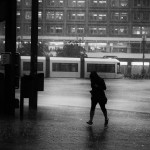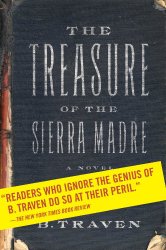Lore is superstition for a modern world that thinks it has shaken off superstition.
Of all the different kinds of lore out there—office equipment lore, marijuana lore, etc.—writing lore is some of the worst. Inevitably writing lore is expressed as an indisputable maxim all writing must follow. Usually writing lore is attached to the name of a well-known, perhaps legendary, author. The august name only burnishes the lore’s authority.
These chestnuts of wisdom that all writers must adhere to thrive and breed unchallenged. Why? Why are we as writers beholden to this set of arbitrary do’s and do not’s?
Hence my peevishness when the Guardian printed a collection of writers’ “Ten Rules for Writing Fiction,” starting with Elmore Leonard’s famed list. (The Guardian cribbed his list from The New York Times, incidentally.) Not everything on these lists is lore—plenty of it is hard-learned personal wisdom—but I have a bone to pick with Leonard’s first rule:
“Never open a book with weather.”
Elmore Leonard isn’t so stupid as to pronounce this absolutism and move on. He offers a justification (“If it’s only to create atmosphere, and not a character’s reaction to the weather, you don’t want to go on too long”) and an exception (“If you happen to be Barry Lopez, who has more ways than an Eskimo to describe ice and snow in his book Arctic Dreams, you can do all the weather reporting you want”). When you contemplate both provisos, suddenly that “never” in “never open a book with weather” melts away like the warming Kilimanjaro snow.
Speaking of, this is what Hemingway wrote to John Dos Passos:
Remember to get the weather in your god damned book—weather is very important.
Hemingway managed to open “A Very Short Story” with a mention of the weather:
One hot evening in Padua they carried him up onto the roof and he could look out over the top of the town.
Here’s his rule-breaking opening to “In Another Country”:
In the fall the war was always there, but we did not go to it any more. It was cold in the fall in Milan and the dark came very early. Then the electric lights came on, and it was pleasant along the streets looking in the windows. There was much game hanging outside the shops, and the snow powdered in the fur of the foxes and the wind blew their tails. The deer hung stiff and heavy and empty, and small birds blew in the wind and the wind turned their feathers. It was a cold fall and the wind came down from the mountains.
Papa again, in “Cross-Country Snow”:
The funicular car bucked once more and then stopped. It could not go farther, the snow drifted solidly across the track. The gale scouring the exposed surface of the mountain had swept the snow surface into a wind-board crust.
I could go on.
In fact, if you think of a story’s title as its true opening, Hemingway is even more guilty: “The Snows of Kilamanjaro”, “Cat in the Rain”, “After the Storm”, even perhaps The Sun Also Rises.
You might object that these openings are reflected in Leonard’s provisos and exceptions. Strange how the circulated lore of “never open a book with weather” usually fails to mention those exceptions, though.
What’s more likely is a writer bringing to a workshop a story that opens with rain drizzling across a window pane, followed by another writing pouncing on the faux pas.
Worse, the lore of “never open a story with weather” is often misattributed to Hemingway, which is crazy. The man made an unstoppable reputation writing about the outdoors. For Hemingway to respect “never open a story with the weather” is like a mystery writer admonishing “never open a story with a murder.”
The prohibition against opening with weather is one more bit of lore designed to mystify and codify the craft. It bedazzles young writers who believe it a key to publication. It offers easy ammunition to every hack who’s entered a workshop ready to shred the story up for review. It’s time to set this tired chestnut aside.

 Every so often an Internet-age chain letter makes the rounds on the social networks that asks the recipient to list their top ten books. Most people are game because it’s fun to make these lists. Sites like BuzzFeed and Upworthy have built media empires on list-making. David Letterman and “Top 10” are synonymous. We like lists. They’re oddly cozy.
Every so often an Internet-age chain letter makes the rounds on the social networks that asks the recipient to list their top ten books. Most people are game because it’s fun to make these lists. Sites like BuzzFeed and Upworthy have built media empires on list-making. David Letterman and “Top 10” are synonymous. We like lists. They’re oddly cozy.